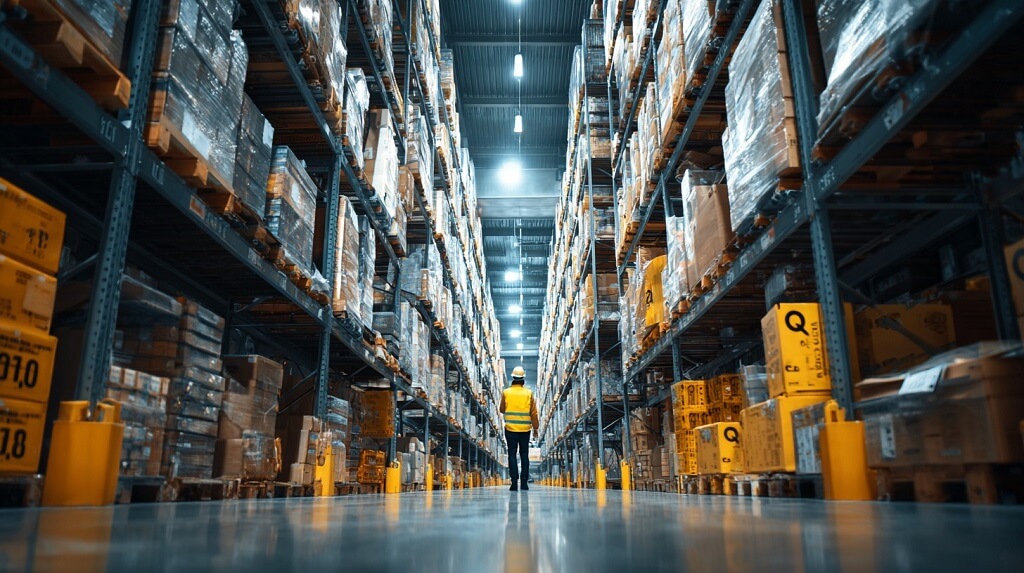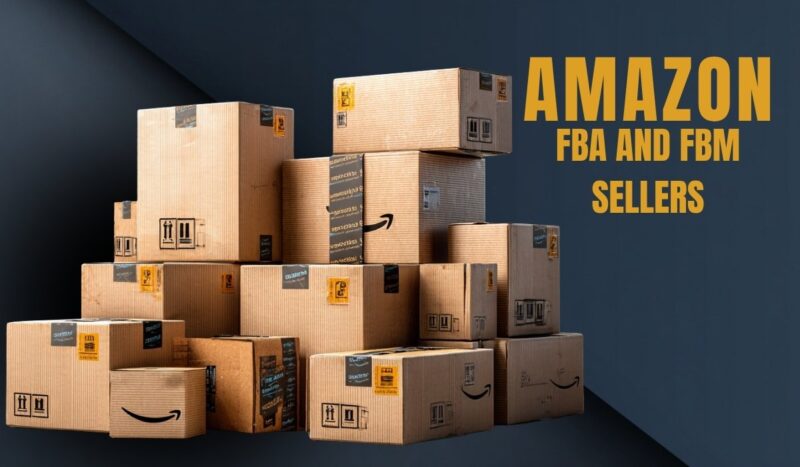Amazon sellers lose more money from invisible costs than from bad products. Fees buried in logistics, storage, and policy updates quietly erode profit month after month. By the time you notice, the margin is gone.
In 2025, it will no longer be enough to calculate product cost and sale price; you must understand the full financial anatomy of FBA and FBM. Both models can make or break your business depending on how precisely you track what Amazon does not highlight in its dashboard.
1. Inbound Freight and Unexpected Routing Costs

FBA begins with inbound shipping. Amazon decides which fulfillment center receives your inventory, and that choice can multiply your freight cost without warning. A shipment that could have cost $200 to send across one state can suddenly be routed across the country for $450. Partnered-carrier discounts soften the hit but never remove it.
FBM sellers face similar hidden transport costs, liftgate fees, detention charges, and fuel surcharges that change weekly. You save on Amazon fees but pay for flexibility.
A 20-pallet load redirected by Amazon’s routing algorithm can quietly add $3,000 or more to your logistics bill for a single shipment cycle.
2. Storage, Aging Inventory, and Seasonal Inflation

Amazon’s warehouse pricing follows a simple pattern: punish slow sellers. Standard storage is $0.87 per cubic foot for most of the year, but jumps to $2.40 in Q4. Then come long-term fees, $6.90 per cubic foot after 365 days.
FBM storage looks stable until you include warehouse rent, staff hours, and insurance. If you overstock by even 15%, your “cheap” warehouse turns expensive.
The invisible cost is time. Every month unsold inventory sits, you lose money twice: once in rent and again in opportunity cost.
3. Return Handling and Refund Shrinkage

Returns represent one of the largest leaks for FBA sellers. Amazon’s automated system refunds buyers instantly, often before an item is checked. Returned goods frequently come back used or damaged, but Amazon still deducts the refund from your account.
FBM sellers avoid this automation but must handle the logistics, return shipping, inspection, and restocking. If you process 200 returns per month at an average of $6 labor and materials per return, that’s $1,200 in hidden costs you likely never track.
4. Labeling, Bagging, and Product Prep

FBA requires every product to meet Amazon’s prep standards: barcodes, safety labels, polybags, and, in some cases, bubble wrap. Each step costs time or money. Amazon will do it for you, but the service ranges between $0.50 and $2.00 per unit.
At scale, prep quickly becomes one of your biggest hidden drains.
Professional prep centers offer an alternative, allowing better cost control and faster turnaround. When sellers benchmark rates, for instance, reviewing Pricing at Dollan Prep Center, they often find that outsourcing to a transparent, third-party facility cuts prep overhead by up to 30%. That single optimization can reclaim thousands annually, especially for private-label or wholesale sellers moving high volume.
5. Removal, Disposal, and Misjudged Product Lines
When products don’t sell, they don’t just sit; they cost. Amazon charges removal fees of $0.52 to $2.55 per unit, and disposal is only slightly cheaper. These charges can easily exceed your profit margin on slow movers.
One poorly researched product with 2,000 unsold units can burn $3,000 in removal costs alone. FBM sellers dodge these direct fees but still pay labor and waste management to clear out unsold stock. Either way, failure to forecast correctly equals paying twice for your mistakes.
6. Packaging Materials and Consumables
Every box, roll of tape, and label printer consumes your margin in tiny increments. FBM sellers spend between $0.35 and $0.60 per order on consumables without realizing it. At 5,000 orders a month, that’s $1,750–$3,000 that disappears quietly.
Even FBA sellers must pay for prep packaging before goods reach Amazon. Fragile items require added materials, and if you skip them, you risk damage claims later. The invisible cost of packaging negligence often comes disguised as negative feedback.
7. Customer Service, Labor, and Compliance Pressure

FBA’s automated customer support is part of what you pay for, and it’s expensive, built into fees you can’t control. FBM sellers handle it themselves, which looks cheaper on paper until you add labor.
A single part-time agent working 20 hours a week at $18/hour adds $1,400 per month to your fixed costs. Miss an Amazon response-time requirement, and your account health suffers another indirect cost that few consider when choosing FBM.
8. Returns Shipping and Lost Restock Value
Even when you win the dispute, you often lose the money. FBM sellers must pay for return postage, inspection, and occasionally restocking. Each return costs roughly $5–$10, depending on product size.
For FBA, the system absorbs return shipping but at the expense of item integrity. Returned units often get marked “unsellable” even when intact, which means you lose both the refund and the product. Over a year, that can equate to 3–5% of your inventory.
9. Inventory Loss and Reimbursement Gaps

Lost inventory is common in FBA. Amazon promises reimbursement for warehouse damage or misplacement, but internal audits frequently reveal missing claims. If you don’t review reports monthly, you might lose 1–3% of your stock value to unclaimed reimbursements.
FBM sellers aren’t immune. Damaged pallets, theft, and inventory miscounts result in similar financial leaks, just hidden in different columns.
10. Advertising, Competition, and Bid Inflation
Sponsored ads are no longer optional; they’re part of Amazon’s sales funnel. PPC spending now absorbs 20–35% of total revenue for active sellers. Bid wars in crowded niches drive cost-per-click up faster than price adjustments can compensate.
For FBA sellers, these ad costs stack on top of fulfillment fees, crushing profitability. FBM sellers advertise less but face slower sales velocity. Both need rigorous tracking to prevent ads from outpacing returns.
11. Accounting Errors and Subscription Leakage

Amazon reports appear transparent, but the fee categories overlap. FBA storage adjustments, stranded inventory, and partial reimbursements often go unnoticed. If you don’t audit your transactions monthly, you’ll lose another 2–3% in net profit annually.
Meanwhile, FBM operations carry hidden subscription expenses, repricing tools, CRM systems, and analytics dashboards, each billed monthly. Ten $50 tools running in the background equal $6,000 a year of untracked expense.
12. Peak Season Surcharges
The holiday quarter exposes unprepared sellers. FBA’s Q4 storage jumps 150%, and Amazon applies new “holiday peak fulfillment” surcharges on certain categories. FBM sellers feel the same pain from increased carrier surcharges and warehouse overtime.
If you don’t plan your logistics calendar around these shifts, your best sales season becomes your most expensive one.
Final Reality Check
Amazon’s system is engineered for its own efficiency, not yours. The platform rewards automation, but automation hides cost. Every convenience, automatic shipping, Prime badge, and instant returns come at a price.
FBA suits sellers who can absorb volatility and scale value. FBM suits sellers who prioritize control and customization. Neither guarantees profit without discipline.
The sellers who last are not the ones with the most sales but the ones who treat cost tracking as a daily operation, not an afterthought. They know what each fee represents, they reconcile weekly, and they outsource only to trusted partners who make expenses transparent instead of opaque.
Dave Mustaine is a business writer and startup analyst at Sharkalytics.com. His articles break down what happens after the cameras stop rolling, highlighting both big wins and behind-the-scenes challenges.
With a background in entrepreneurship and data analytics, Dave brings a sharp, practical lens to startup success and failure. When he’s not writing, he mentors founders and speaks at entrepreneur events.



